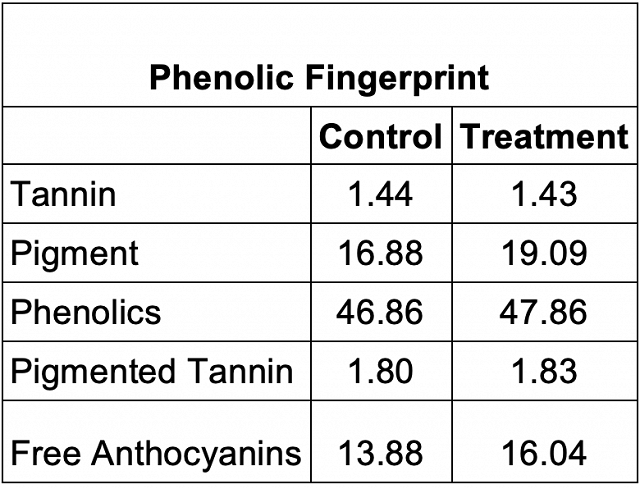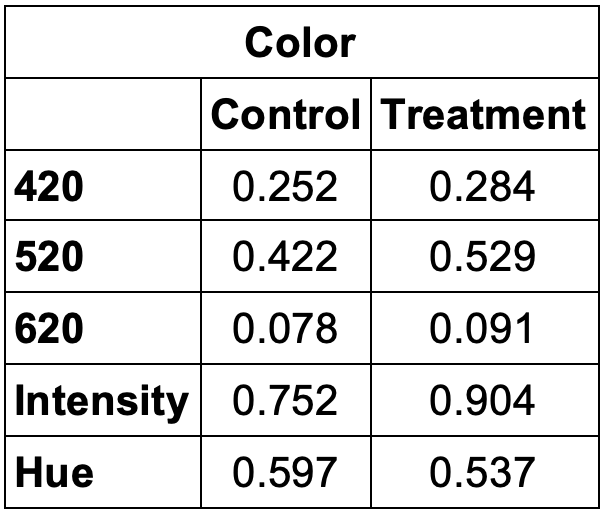Cabernet Franc Drying Tunnel (2015)
Emily Pelton
Veritas Vineyard and Winery
Summary:
Identically sourced Cabernet Franc was harvested and separated into two groups: control and Treatment. The control group was put in a refrigerated truck and destemmed to Tbin. The Treatment group was stored in a drying tunnel for 4 days then put in a refrigerated truck to cool before destemming to TBins. All additions, inoculation (ICV-D21), and cap management protocols were identical between groups. Both groups were pressed off after extended maceration of 20 days, settled in tank and barreled. They were then inoculated with PreAC 450 ML bacteria according to the provided protocol. Following completion of MLF SO2 was added to all barrels.
Lab Results:
Interestingly, the Cabernet Franc that went through the drying tunnel had a lower alcohol percent, in spite of desiccating. There was not a large amount of residual sugar as well. This wine, however, had higher levels of anthocyanins and had higher color intensity.



Sensory Results:
There was no significant sensory difference (p<0.05) between the Control (no drying) and Treatment (drying). However, of those that responded correctly (n=7) 14% preferred the control and 86% preferred the treatment.
